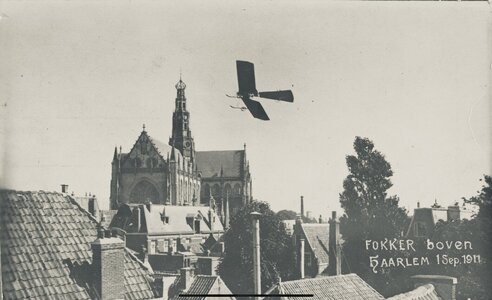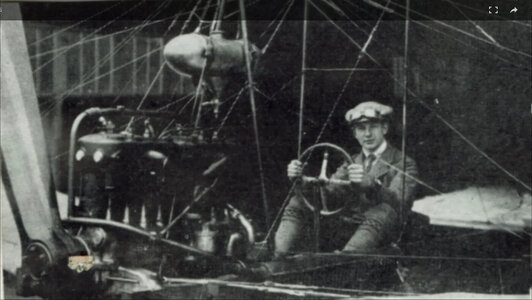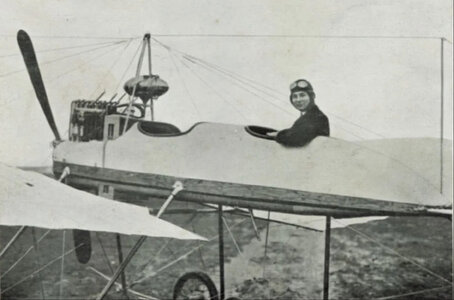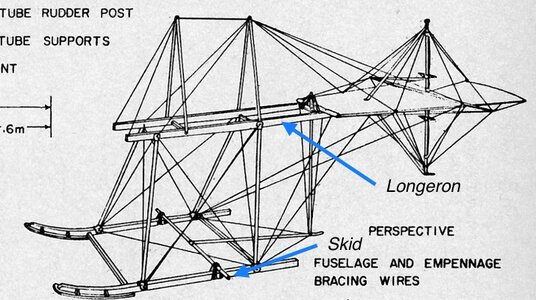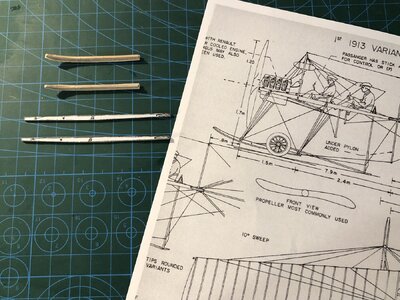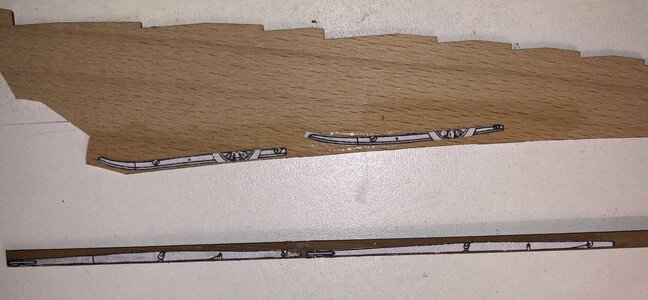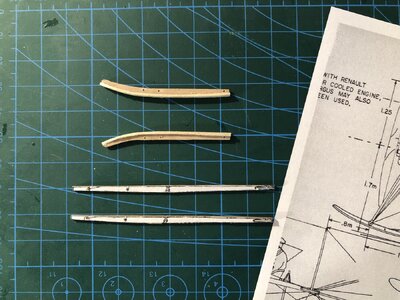From Wikipedia: (
https://en.wikipedia.org/wiki/Anthony_Fokker)
"Anton Herman Gerard "Anthony" Fokker (6 April 1890 – 23 December 1939) was a Dutch
aviation pioneer, aviation
entrepreneur,
aircraft designer, and
aircraft manufacturer. He produced fighter aircraft in Germany during the
First World Warsuch as the
Eindecker monoplanes, the
Dr.1 triplane and the
D.VII biplane.
After the
Treaty of Versailles forbade Germany to produce aircraft, Fokker moved his business to the
Netherlands. There,
his company was responsible for a variety of successful aircraft including the
Fokker F.VII/3m trimotor, a successful interwar passenger aircraft. He died in
New York in 1939. Later authors suggest he was personally charismatic but unscrupulous in business and a controversial character.
Early life
Anthony (Tony) Fokker was born in
Blitar,
Dutch East Indies(now
Indonesia), to Herman Fokker, a Dutch coffee plantation owner and Johanna Hugona Wouterina Wilhelmina Diemont. Some sources say that he was born in
Kediri. At that time, Blitar was a part of the "Kediri Residency", a colonial administrative division the capital of which was Kediri. He was a cousin of the physicist
Adriaan Fokker.
When Fokker was four, the family returned to the
Netherlands and settled in
Haarlem in order to provide Fokker and his older sister, Toos, with a Dutch upbringing.
Fokker was not a studious boy and did not complete his high school education. However, he showed an early interest in mechanics, and preferred making things, playing with model trains and steam engines, and experimenting with model aeroplane designs.
He devoted considerable effort, as a highschool student to the development of a wheel that would not suffer from punctures, basically a wheel with a perimeter formed by a series of metal plates.
Move to Germany
Fokker's interest in flight stemmed from
Wilbur Wright's exhibition flights in France in the summer and fall of 1908. In 1910, aged 20, Fokker was sent by his father to
Germany to receive training as an automobile
mechanic at Bingen Technical school, but his interest was in
flying, so he transferred to the Erste deutsche Automobil-Fachschule in
Mainz.
That same year Fokker built his first aircraft "
de Spin" ("the Spider"), which was destroyed when his business partner flew it into a tree. He gained his
flying certificate in his second "
Spin" aircraft, which shortly thereafter was also destroyed by the same business partner, prompting Fokker to end their cooperation. In his own country, he became a celebrity by flying around the tower of the
Grote or St.-Bavokerk in
Haarlem on 1 September 1911, with the third version of the "
Spin". One day earlier, on
Queen's Day (31 August,
Queen Wilhelmina's birthday), Fokker had already taken the opportunity to make a couple of demonstration flights in Haarlem in the same aircraft.
In 1912, Fokker moved to
Johannisthal near
Berlin, where he founded his first own company,
Fokker Aeroplanbau. In the following years he constructed a variety of aircraft. He relocated his factory to
Schwerinwhere it was renamed
Fokker Flugzeugwerke GmbH, and later shortened to
Fokker Werke GmbH.[
citation needed]
Involvement in World War I
At the outbreak of
World War I the German government took control of the factory. Fokker remained as director and alleged designer of many aircraft for the Imperial German Army Air Service (
Luftstreitkräfte), including the
Fokker Eindecker and the
Fokker Dr.I, the triplane made famous in the hands of
aces such as
Manfred von Richthofen (the Red Baron). In all, his company delivered about 700 military aircraft to the German air force as well as supplying the German navy and Austria-Hungary.
Fokker himself was a skilled pilot, demonstrating his aircraft on many occasions. On 13 June 1915, Fokker demonstrated the new
Eindecker (monoplane) at
Stenay in the
German 5th Army Sector in front of the
German Crown Prince and other
VIPs. Fokker worked closely with an accomplished military pilot,
Otto Parschau, to bring the Eindecker into military use and on this occasion both men demonstrated the aircraft.
Max Immelmann, later to become a high-scoring
flying ace with the
Eindecker, commented in a letter written shortly after this event on 25 June 1915 that: "Fokker, especially, amazed us with his skill".
Author A.R. Weyl (
Fokker: The Creative Years, Putnam 1965) says that, while Fokker was a talented and bold pilot, his business character was more flawed. He failed to reinvest war profits back into his factory which consequently struggled to fulfill contracts as the factory floor was often muddled with prototype development and production taking place at the same time. Fokker distrusted qualified engineers (which he was not), and resented frequent German insistence on carrying out stringent structural tests to ensure prototype aircraft were fit for combat. He could be bad tempered and insensitive, as when he verbally abused his dying designer Martin Kreuzer on the evening of 27 June 1916, after Kreuzer had crashed the prototype Fokker D.I. The rudder jammed, but Kreuzer was able to give an oral report on the accident before he died. "Fokker hurried to the scene, and shouted reproaches at the mortally injured man". Weyl says this incident was witnessed by
Reinhold Platz, who succeeded Kreuzer.
While Weyl's biography paints an unpleasant picture of Fokker as a businessman, he was a popular and charismatic figure with service pilots, and could charm even senior officers. This charm enabled him to deal with the first major crisis of his German career when his newly delivered Fokker Dr.I triplanes began to experience sudden fatal accidents in late 1917, and the type was temporarily grounded as too dangerous to fly. The triplanes' top wings frequently ripped off under aerobatic conditions and even
Lothar von Richthofen (brother of Manfred) was lucky to survive one such crash. Fokker was able to prove to the German high command that the basic design was not at fault, but the German military inquiry concluded that shoddy workmanship due to poor supervision and quality control at the Fokker factory were to blame. Fokker received a stern warning about future conduct. Unfortunately the same scenario repeated itself a few months later, with the introduction of his E.V/D.VIII monoplane in mid-1918. A further high level German inquiry revealed more production and workmanship issues. Weyl asserts that the German authorities were now willing to file criminal charges against Fokker, and might have done so, had he not returned to the Netherlands shortly after the end of World War I.
Fokker's own account of the D.VIII places the blame on officious German Air Force inspectors requiring an ill-conceived design change. "When the first D-8 was submitted to the engineering division to be sandload tested, the wings proved to be sufficiently strong, but the regulations called for a proportionate strength in the rear spar compared to the front spar ... Complying with the government's edict, we strengthened the rear spar and started to produce in quantity ..." The D.VIIIs immediately ran into trouble with the wing collapsing at high speed. Fokker recalled the aircraft for further testing, and successfully demonstrated that the reinforced rear spar caused the wings to flex unevenly at speed, increasing the angle of attack at the wing tips and causing the wing to shear apart under the increased loads. The problem was resolved by restoring the rear spar to its original specifications.
Weyl also discusses claims of Fokker's outright plagiarism or taking sole credit for the work of his staff, first designer Martin Kreuzer and later
Reinhold Platz. For example, contemporary German documents for the E.V/D.VIII refer to Fokker as "the designer" but Weyl and other authors now suggest that Platz was the real design genius behind the Dr.I, D.VII and D.VIII. There may be some truth in this as Platz recalled to Weyl that he attended high level meetings alongside Fokker but was never introduced or referred-to as the designer and often never even spoke. Yet when Fokker fled Germany it was Platz who immediately took over the German works on Fokker's behalf. Fokker later moved Platz to the Netherlands, as head designer, when the post-war German operation collapsed which indicates Platz really did play a greater design role than Fokker admits. Weyl uncharitably suggests that Platz's role at the Fokker D.VIII crisis meetings was to take the blame if anything was wrong and not receive credit. How much of this interpretation is based on the fact that Platz was still alive to tell his side of the story in 1965, and Fokker was not, is unclear.
Another book by Henri Hegener (who knew both Fokker and Platz personally) depicts a rather different story, saying that Platz, while a skilled craftsman (and excellent welder), had received no formal technical training, and that his contributions to the Fokker designs are exaggerated, although Hegener grants that Platz was a good "rule of thumb" designer. Hegener also contradicts the claims that Platz was treated badly by Fokker, at least not financially because Platz's year-end bonuses often exceeded his yearly salary."

